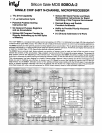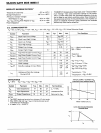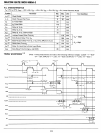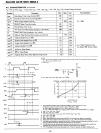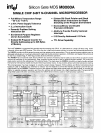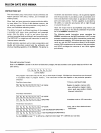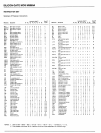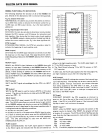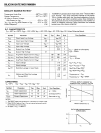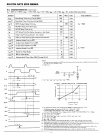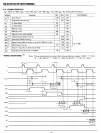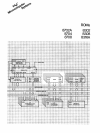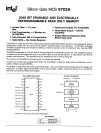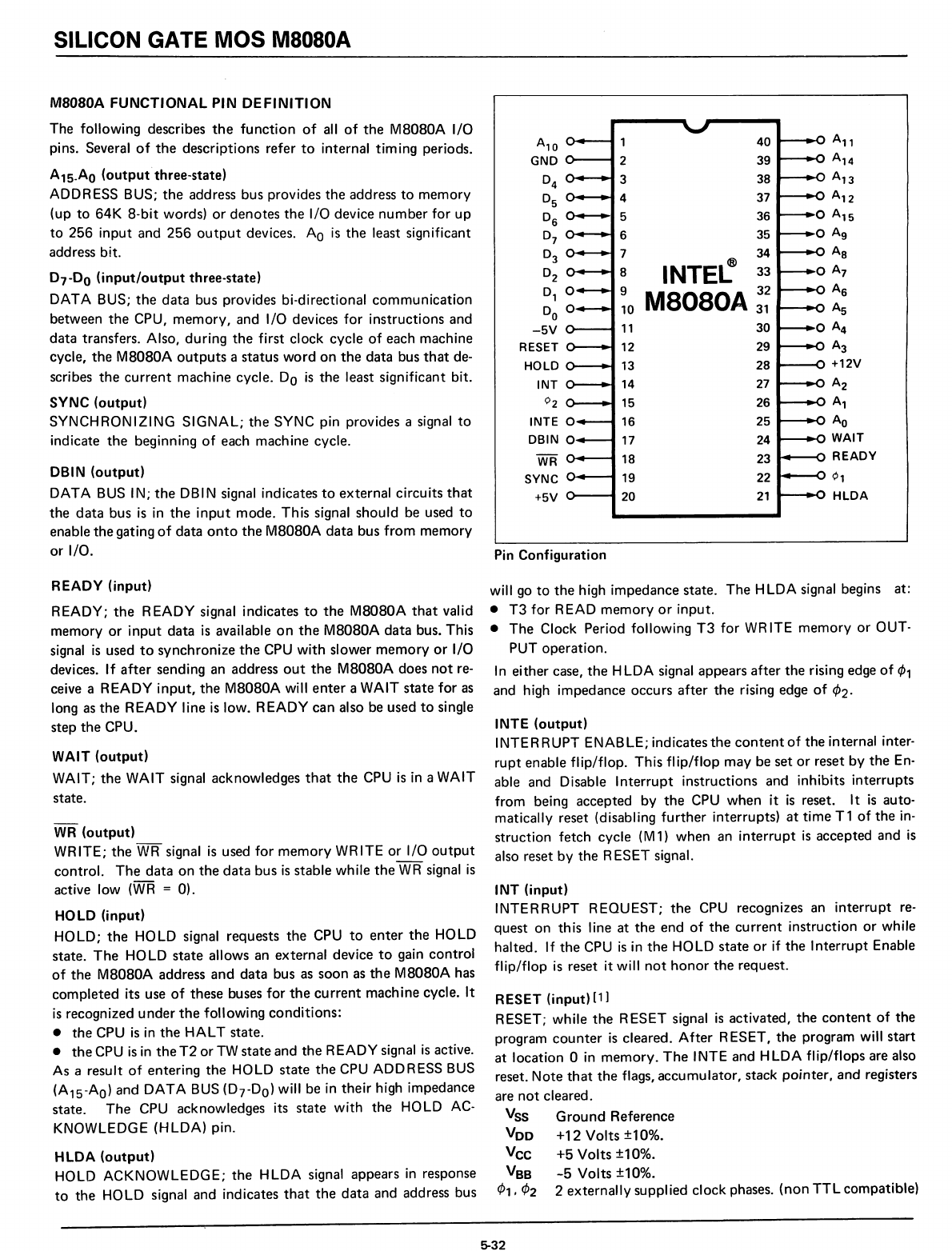
SILICON GATE
MOS
M8080A
M8080A
FUNCTIONAL
PIN
DEFINITION
The
following describes
the
function
of
all
of
the
M8080A
I/O
pi
ns. Several
of
the
descriptions
refer
to
internal
tim
ing periods.
A15-AO
(output'
three~state)
ADDRESS BUS;
the
address
bus
provides
the
address
to
memory
(up
to
64K
8-bit
words)
or
denotes
the
I/O device
number
for
up
to
256
input
and
256
output
devices. A
o
is
the
least significant
address bit.
07
-Do
(input/output
three-state)
DATA
BUS;
the
data
bus
provides bi-directional
communication
between
the
CPU,
memory,
and
I/O devices
for
instructions
and
data
transfers. Also,
during
the
first
clock
cycle
of
each
machine
cycle,
the
M8080A
outputs
a
status
word
on
the
data
bus
that
de-
scribes
the
current
machine
cycle. Do
is
the
least significant bit.
SYNC
(output)
SYNCHRONIZING
SIGNAL;
the
SYNC
pin provides a signal
to
indicate
the
beginning
of
each
machine
cycle.
DBIN
(output)
DATA BUS IN;
the
DBIN signal
indicates
to
external
circuits
that
the
data
bus
is
in
the
input
mode.
This
signal
should
be used
to
enable
the
gating
of
data
onto
the
M8080A
data
bus
from
memory
or
I/O.
READY
(input)
READY;
the
READY
signal
indicates
to
the
M8080A
that
valid
memory
or
input
data
is
available
on
the
M8080A
data
bus.
This
signal
is
used
to
synchronize
the
CPU
with
slower
memory
or
I/O
devices. If
after
sending
an address
out
the
M8080A
does
not
re-
ceive a
READY
input,
the
M8080A
will
enter
a WAIT
state
for
as
long as
the
READY
line
is
low.
READY
can
also be
used
to
single
step
the
CPU.
WAIT
(output)
WAIT;
the
WAIT signal
acknowledges
that
the
CPU
is
in a WAIT
state.
WR
(output)
WRITE;
the
WR
signal
is
used
for
memory
WRITE
or
I/O
output
control.
The
data
on
the
data
bus
is
stable
while
the
WR
signal
is
active low
(WR
= 0).
HOLD
(input)
HO LD;
the
HO
LD
signal
requests
the
CPU
to
enter
the
HO
LD
state.
The
HO
LD
state
allows an
external
device
to
gain
control
of
the
M8080A
address
and
data
bus as
soon
as
the
M8080A
has
completed
its use
of
these
buses
for
the
current
machine
cycle. It
is
recognized
under
the
following
conditions:
•
the
CPU
is
in
the
HALT
state.
•
the
CPU
is
in
the
T2
or
TW
state
and
the
READY signal
is
active.
As a
result
of
entering
the
HOLD
state
the
CPU
ADDRESS
BUS
(A
15
-A
o
)
and
DATA
BUS
(0
7
-0
0
) will be in
their
high
impedance
state.
The
CPU
acknowledges
its
state
with
the
HOLD AC-
KNOWLEDGE (HLDA) pin.
HLDA
(output)
HOLD
ACKNOWLEDGE;
the
HLDA signal
appears
in
response
to
the
HOLD signal
and
indicates
that
the
data
and
address bus
1
40
All
2
39
A
14
3
38
A
13
4
37
A
12
5
36
o A
1S
6
35
o A
g
7
34
As
8
INTE~
33
o A
7
9
M8080A
32
A
6
10
31
As
11
30
o A
4
12
29
A
3
13
28
+12V
14
27
A
2
15
26
A
l
16
25
A
o
17
24
WAIT
WR
18
23
READY
SYNC
19
22
¢l
+5V
20
21
HLDA
Pin
Configuration
will go
to
the
high
impedance
state.
The
HLOA signal begins at:
•
T3
for
READ
memory
or
input.
•
The
Clock Period following
T3
for
WR
ITE
memory
or
OUT-
PUT
operation.
In
either
case,
the
HLOA signal
appears
after
the
rising edge
of
(/)1
and high
impedance
occurs
after
the
rising edge
of
(/)2.
INTE
(output)
INTE RRUPT ENAB LE; indicates
the
content
of
the
internal inter-
rupt
enable
flip/flop.
This
flip/flop
may
be
set
or
reset
by
the
En-
able
and
Disable
Interrupt
instructions
and
inhibits
interrupts
from
being
accepted
by
the
CPU
when
it
is
reset. It
is
auto-
matically reset (disabling
further
interrupts)
at
time
T 1
of
the
in-
struction
fetch
cycle
(M
1)
when
an
interrupt
is
accepted
and
is
also reset
by
the
RESET
signal.
INT
(input)
INTERRUPT
REQUEST;
the
CPU recognizes an
interrupt
re-
quest
on
this
line
at
the
end
of
the
current
instruction
or
while
halted.
If
the
CPU
is
in
the
HOLD
state
or
if
the
Interrupt
Enable
flip/flop
is
reset it will
not
honor
the
request.
RESET
(input)
[1]
RESET; while
the
RESET
signal
is
activated,
the
content
of
the
program
counter
is
cleared.
After
RESET,
the
program will
start
at
location
0 in
memory.
The
INTE
and
HLDA
flip/flops
are also
reset.
Note
that
the
flags,
accumulator,
stack
pointer,
and
registers
are
not
cleared.
Vss
Ground
Reference
Vee
+12
Volts
±10%.
Vee
+5
Volts
±10%.
Vs
s
-5
Volts
±10%.
¢1, ¢2 2
externally
supplied
clock
phases.
(non
TTL
compatible)
5-32



